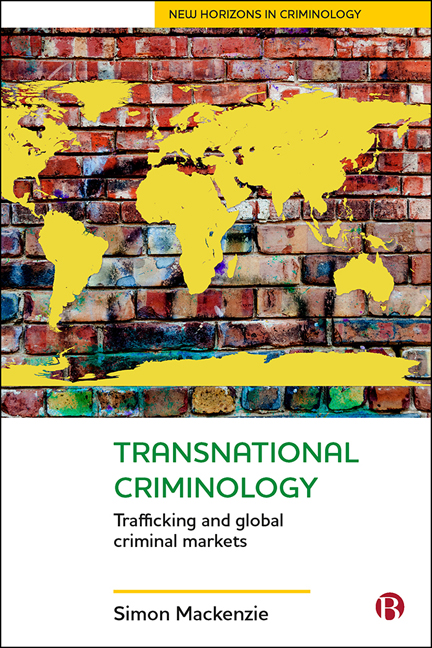Book contents
1 - Introduction: Trafficking as Transnational Crime
Published online by Cambridge University Press: 25 February 2021
Summary
Taking the illicit economy out of the shadows
Transnational crime crosses borders and is a term that has come to be applied to a variety of crimes that affect more than one country (Marmo and Chazal 2016; Natarajan 2019c). Transnational crime can be thought of as distinct from international crime, a term that has developed into an academic and legal reference to genocide, war crimes and other crimes against humanity that offend the basic common normative understanding of peace, security and wellbeing in the world order (Reichel and Albanese 2016). Neither is transnational crime a term synonymous with global crime, since global crime has come to mean either looking at crime in different places around the world, often comparatively (Galeotti 2005; Roth 2017), or a general focus on globalization as the context for developments in crime and justice (Findlay 2003; Aas 2007; Friedrichs 2007).
Some writers on transnational crime, in keeping with the United Nations discourse (United Nations 2000; UNODC 2010), address transnational organized crime (Albanese 2015; Albanese and Reichel 2014). However, in addition to the globalization of the interests and activities of organized crime groups, which we might call the ‘narrow’ interpretation of transnational organized crime, quite a lot of networked forms of criminal activity across state borders might reasonably be considered to be organized crime even though they may not fit a traditional understanding of that term (Edwards and Gill 2003; Beare 2003). This gives a ‘wider’ interpretation of the idea of transnational organized crime. In this wider context, which includes and goes beyond the study of the international reach of organized crime in the narrow sense, my take on transnational criminology approaches the topic from the perspective of illicit trade. My approach to transnational crime and transnational criminology is to seek to understand international trafficking and global criminal markets.
Market-oriented crimes ‘constitute the great majority of all serious crimes in advanced capitalist societies, [and] are committed in response to consumer demands for the goods or services criminals provide’ (Rosenfeld and Messner 2013: 104). Globalization has increased the speed and amount of international travel and communication and as such brought people around the world ‘closer together’ in a process that has been called time–space distanciation (Giddens 1990).
- Type
- Chapter
- Information
- Transnational CriminologyTrafficking and Global Criminal Markets, pp. 1 - 20Publisher: Bristol University PressPrint publication year: 2020



